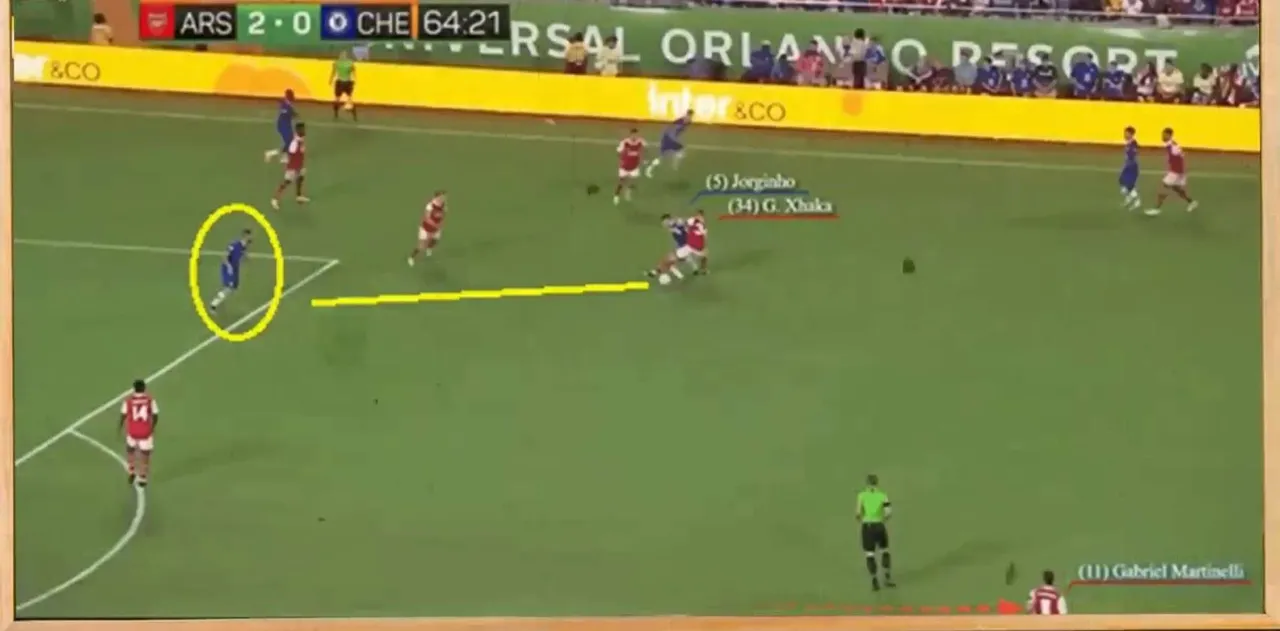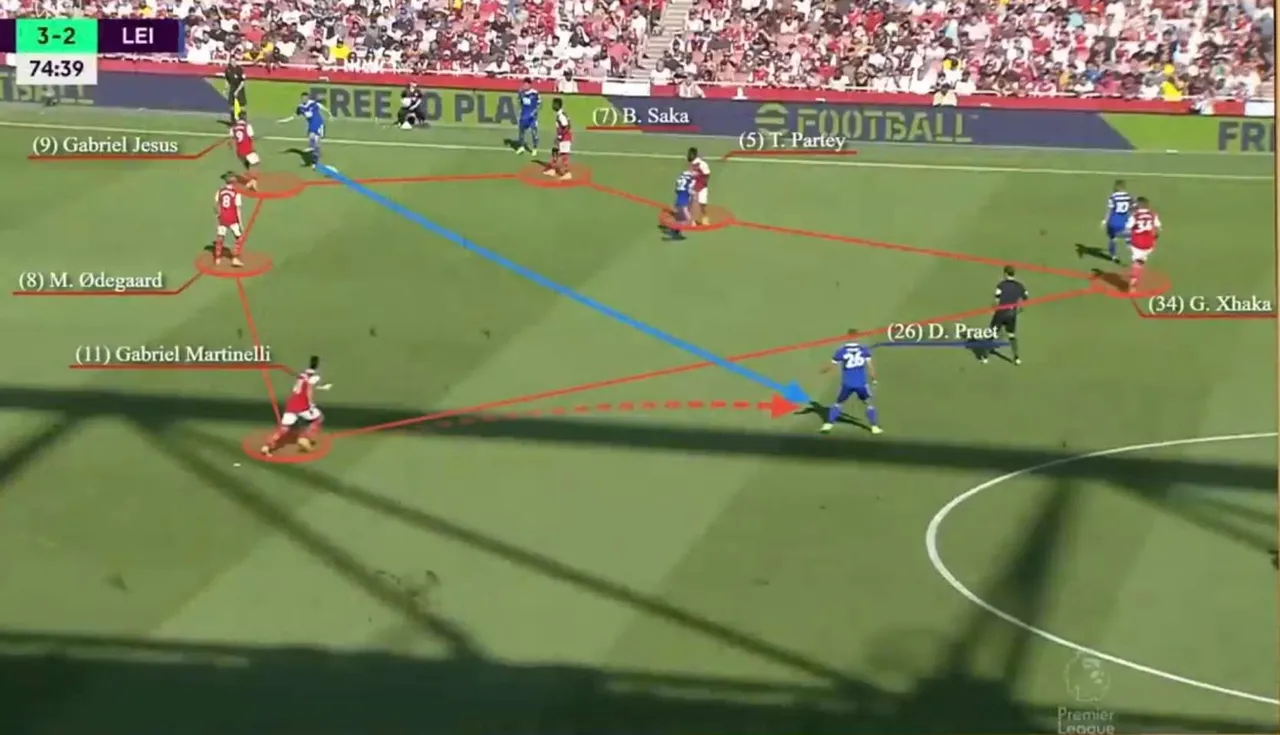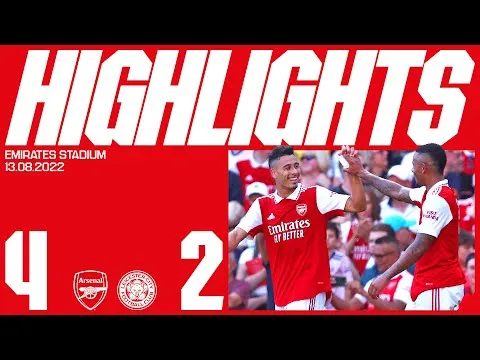One of Arteta's biggest concerns was pressure and how to apply it with the squad players. I talked here about how that came to improve. Having a pressure tactic in the coach's mind is something, applying it is another. But, what happens when the players understand the goal and begin to improve it through improvising?

4-2-3-1 became the official pressure anthem for Arsenal, Ødegaard, Jesus down the middle with Saka and Gabriel Martinelli on the flanks. What started to happen afterwards is the players began to absorb the style of pressure even more, prompting them to make intelligent decisions in unfamiliar territories.
Understanding Goals Not Instructions
Arsenal players understood something much more important than structure and instructions, Ødegaard's role in telling the players what to do led to the players themselves becoming more aware of something that's more important than what was happening, and they started to understand why it was happening. There was no player telling himself "I will mark this player and don't care about the rest". Ødegaard imagining what the final shape should be helped his teammates imagine the same. Thus, they became one unit.
Bear in mind, one unit doesn't necessarily mean the players move in one direction at the same time, sometimes it was the opposite. It was a case that there's a shape that needs to always exist and all the players needed to move in harmony with that shape. All the players were moving and all the players were making up for other players' movements. What mattered is that the players up front keep the rhombus and keep the opponent's options limited.
This led to the next step.
Spontaneous Compensation
During Arsenal's last preseason, Xhaka of something that Arteta did. Arteta had brought a certain clip of a match they just played against Chelsea and commended them for it, despite the fact that they didn't stick to his tactics.
During the aforementioned game, Xhaka was supposed to mark Jorginho as we see below. Thus, Jorginho pulled Xhaka out of position in an attempt to get the ball moving forward to get out of Arsenal's pressure

Jorginho actually failed to keep the ball or move it forward. So, what does that clip matter? Well, because of the following

As you see at the bottom, Gabriel Martinelli took it upon himself to leave the right-back he was supposed to mark and moved toward the centre. This decision wasn't instructed by either Arteta or even Ødegaard at the time. It was a cautionary, improvised decision by Martinelli and no one else.
Xhaka went after Jorginho, thus a big space in the middle was opened. This matters because very close to Jorginho was Mateo Kovačić.

This meant Arsenal's pressure line would have been broken leaving behind 4 Arsenal players and out of play with no one to help out Partey, 5 if Martinelli committed to the right-back without caring.
Martinelli saw that a pass to the midfield wouldn't have only been easier for Chelsea, but much more dangerous against Arsenal. This is when we realize that the players have absorbed the pressure style.
Why Does All of The Matter?
Well, it matters in the context of never falling behind, but more importantly, it made for a nice trap. Many play keepers could easily assume that Martinelli, or any other Arsenal player really, would always commit to a player, but Arsenal's shape was more dynamic than that. So, this action may lead to disrupting an opponent's attack, or even better, for Arsenal to have the ball, or even better than all of that, Arsenal would score a goal thanks to that.
Less than four weeks after that incident, Arsenal went on to face Leicester City, and guess what? A similar thing happened.
During that game, Arteta's team were winning 3-2 against Leicester City with the foxes plotting a comeback.

Maddison took Xhaka out of position, prompting a clear path for the ball to reach Dennis Praet down the middle of the pitch. Martinelli, once again, moved toward the centre to keep the ball away from Praet. There's no such a thing as "this is not your position". The right-back was irrelevant here because first, the ball needed to be played to him long and accurately which was difficult, second, it would have taken enough time for Arsenal to regroup by the time the ball reaches him.
Martinelli ended up intercepting the ball in what could only be described as a pressure trap. If that scene looks familiar to you, then that's because it led to an Arsenal goal, one that killed the game and gave Arsenal the win as you will see in the video below.

What mattered at that moment is that Dennis Praet was going to receive the ball. That problem was much more urgent than anything else. That's the value of what Martinelli did. Martinelli didn't only make a decision, but he made it early while reading the ball early that he intercepted the ball and turned it into a goal that killed the game. Arsenal's pressure was the closest thing to perfection, it wasn't even done through instructions but through improvisational decisions, or spontaneous compensation.
In Conclusion
Arsenal finished last season as the third-best team after Manchester City and Liverpool when it comes to pressure in the final third. They were the fourth in the league after Liverpool, Southampton, and Leeds when it came to high turnovers that were converted into shots on goal. That's what happens when the pressure is in the final 40 meters of the pitch. Arsenal had done that 40 times.
This season, however, Arsenal still remain fourth in high turnovers, but first in terms of that high turnover being converted into shots. I started writing this series a day before Arsenal faced Spurs, after that game, I saw that all the pressure wasn't even requiring the players to talk anymore, sometimes, they don't even point at each other. Arsenal's 4 players up front no longer need to communicate, they just know what they need to do and know how to do it.
That was the final stage of this phase. Everything mentioned in part 1, part 2, and part 3 was done to reach this point. This includes parking the bus, 3-4-3, low blocks in many matches, and using the limited tools for pressure despite their limitations, namely Aubameyang and Lacazette.
This final big picture was only clear in Arteta's head along with his immediate coaching staff. All the temporary stops were treated by the watchers as Arteta's conviction and what was going to be a constant for the team while they were only there to adapt to the current situation and available tools.
It's only this season that this phase reached its final form, and there's more to come.
